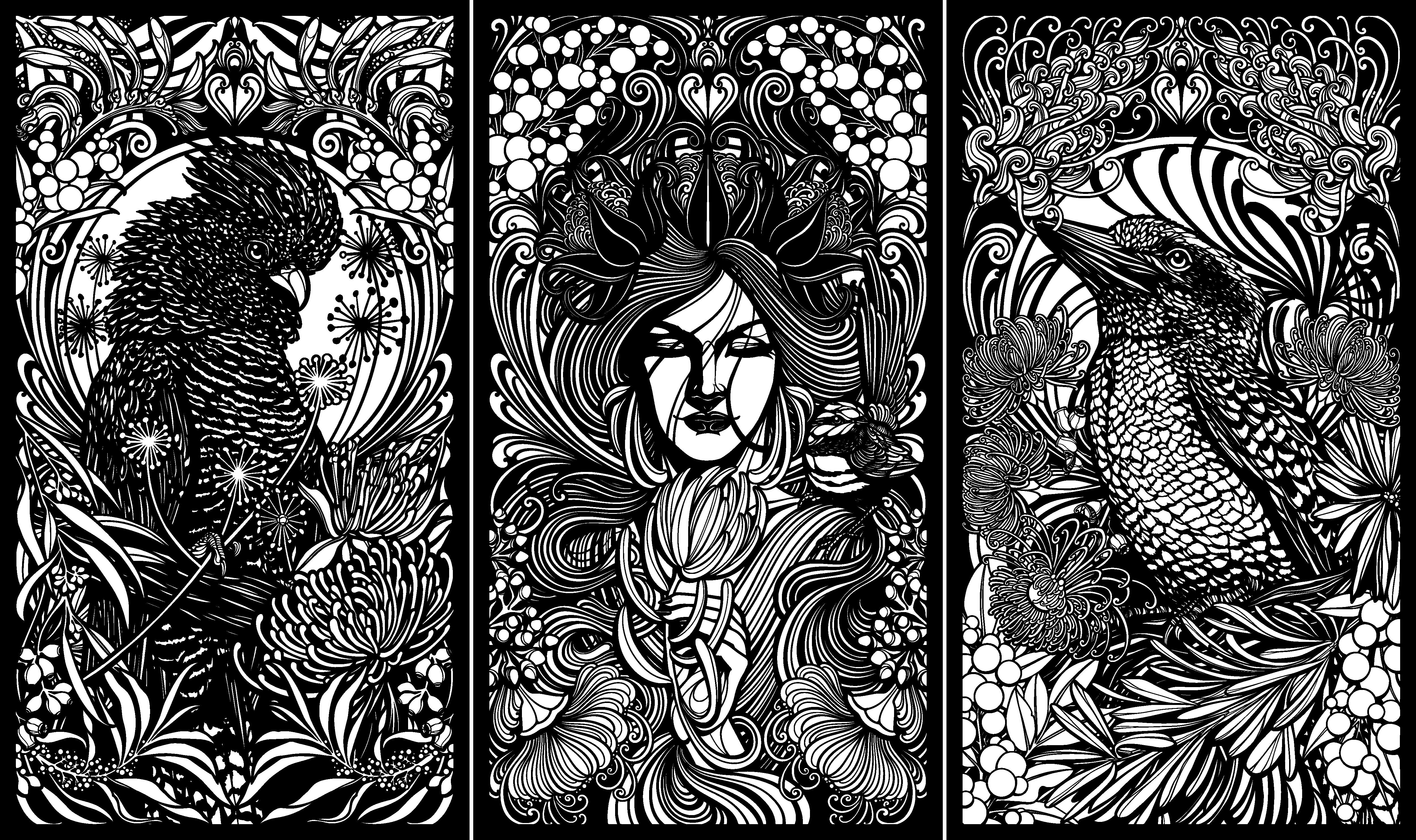
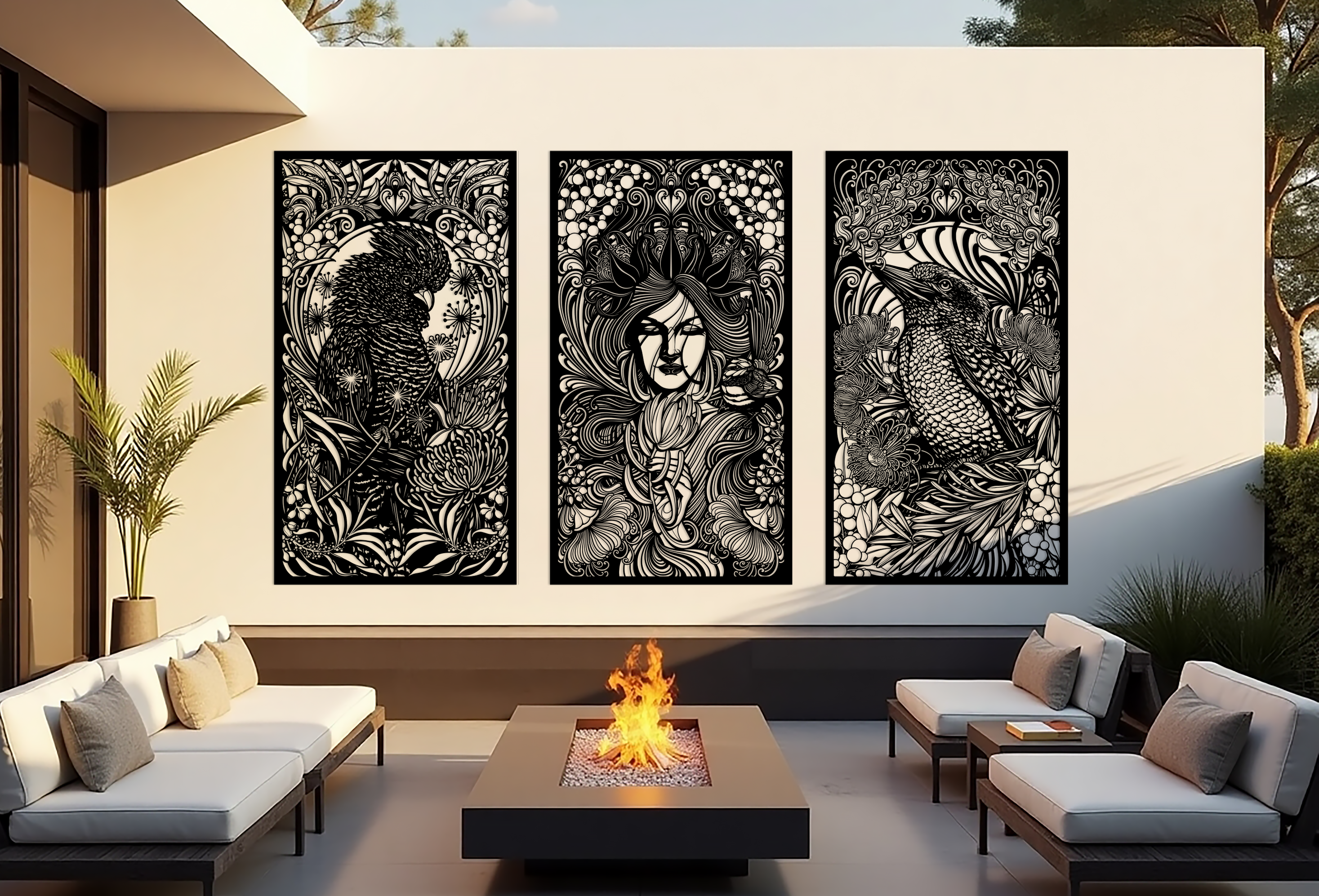
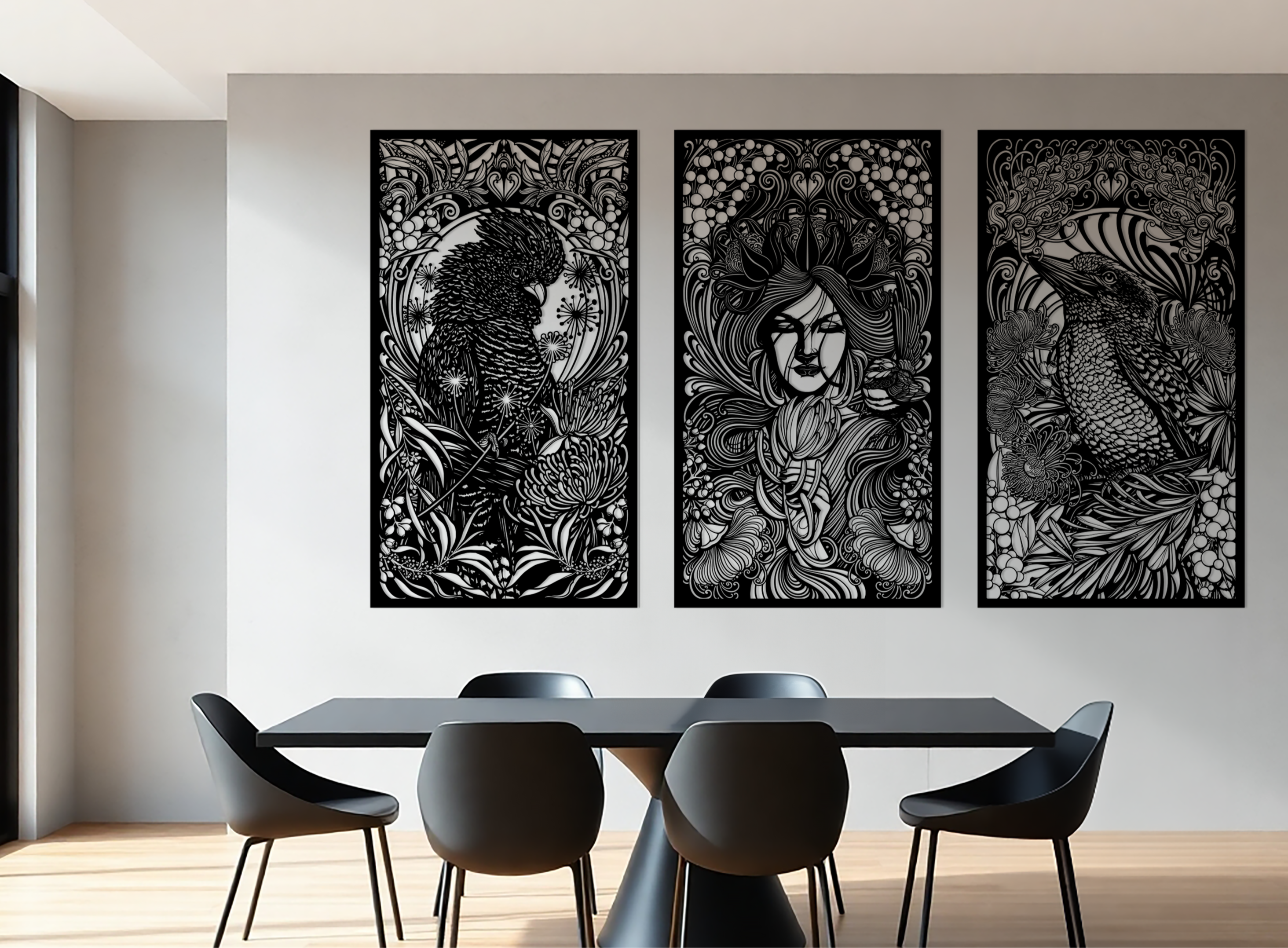
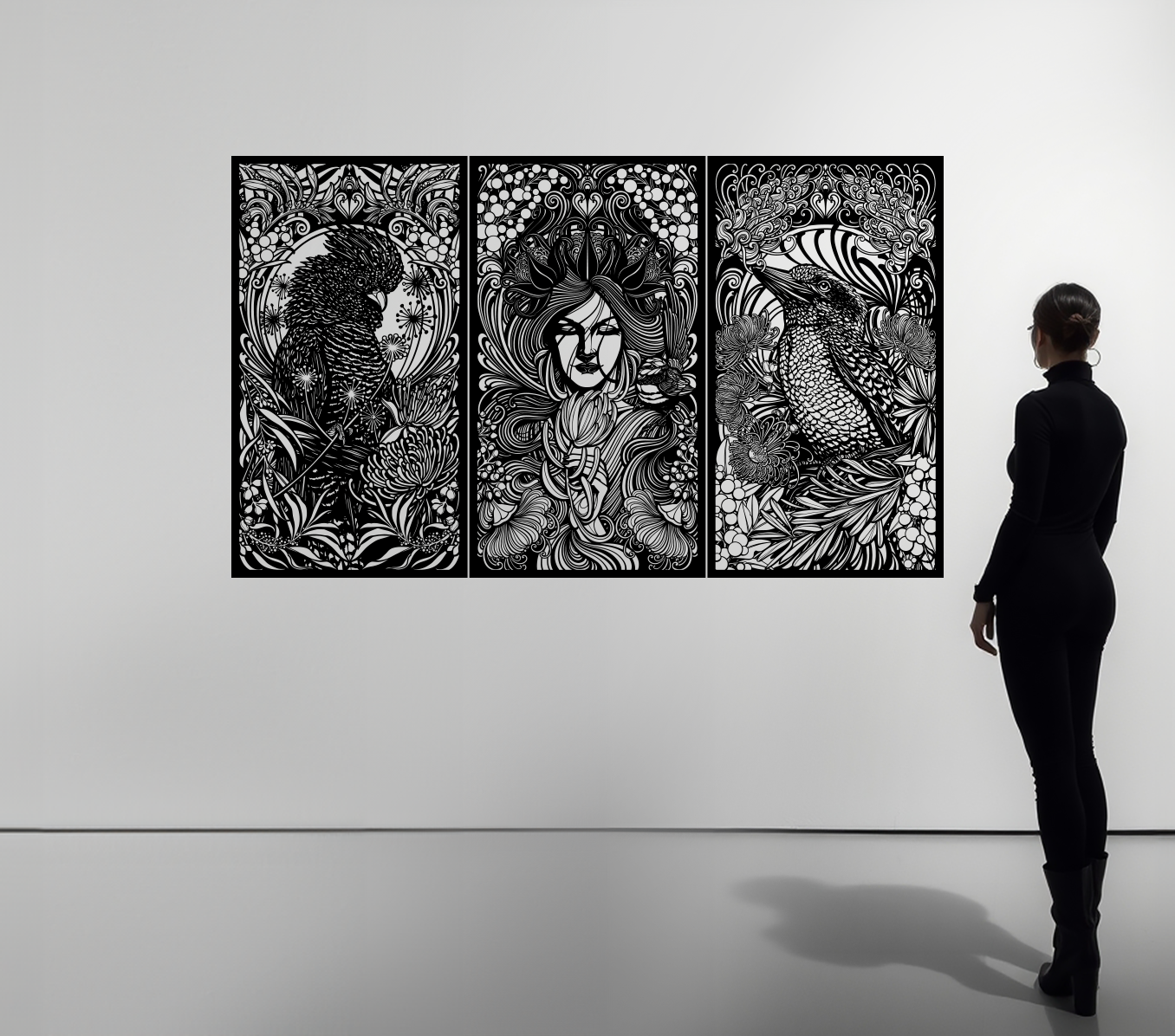
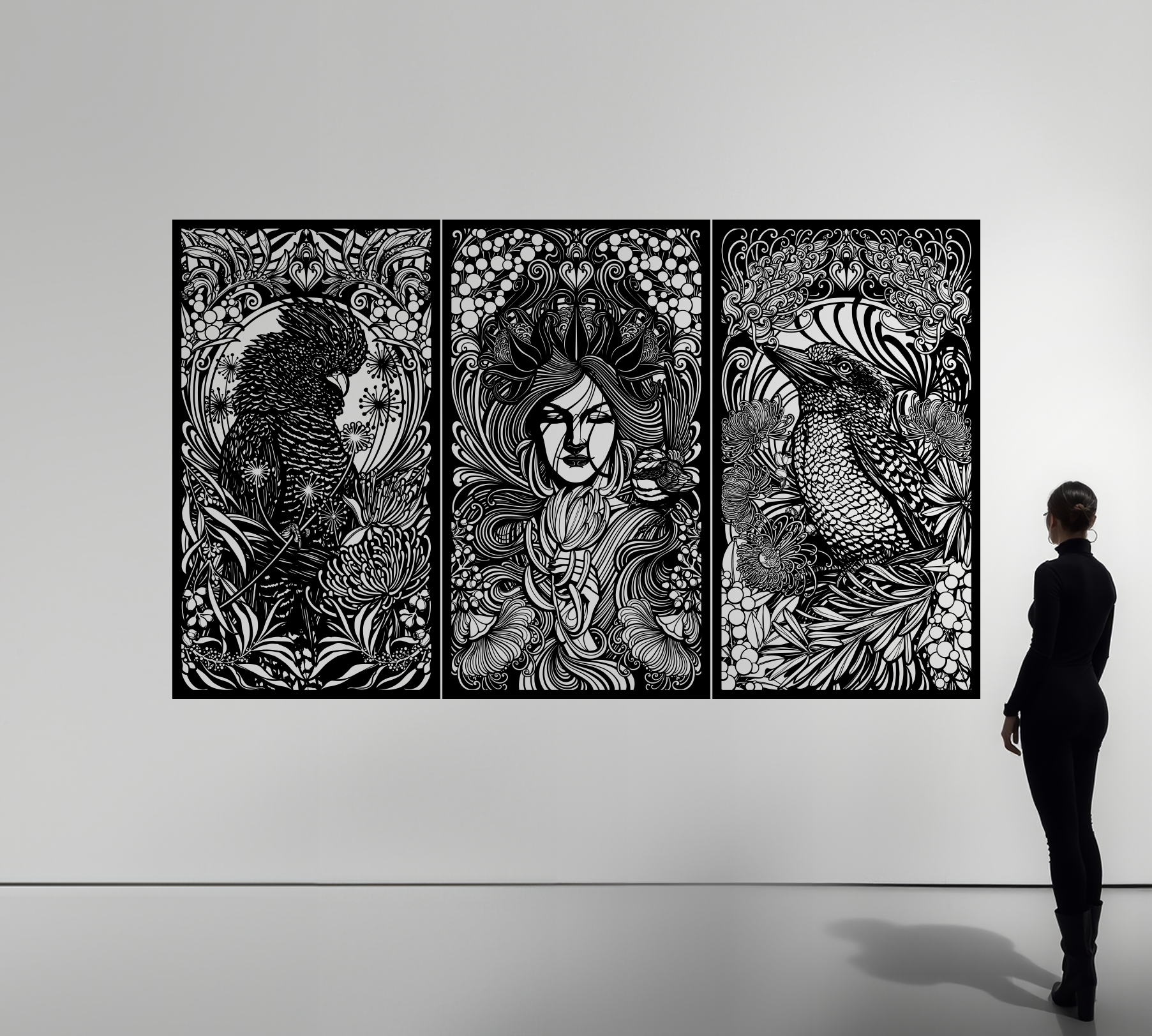
Australian Natives Triptych
A celebration of Australia’s native wildlife and flora, this triptych features a kookaburra, a black cockatoo, and a female figure with a fairy wren, framed by native botanicals. Designed to reflect the beauty and spirit of the Australian outback, this set merges Art Nouveau elegance with the raw beauty of Australia.
SPECIFICATIONS
Available Sizes
Material
Aluminium: Lightweight, rust-resistant, ideal for outdoor and indoor use.
Finish
Matte black powder coating (durable, weather-resistant)
AVAILABILITY
Made to Order – 6 to 8 Week Turnaround
If your selected panel size is in stock, it will ship within 2–3 business days.
If made to order, production begins in the next batch cycle, with an estimated turnaround of 6 to 8 weeks.
Extra Large Panels (2.8m and above):
Custom freight quotes are required before purchase. Please contact us to confirm shipping pricing and timelines for oversized pieces.
INSTALLATION GUIDE
For detailed installation and care instructions, visit our Vanta Wall Panel Hanging & Care Guide.
STORY
Choose options






